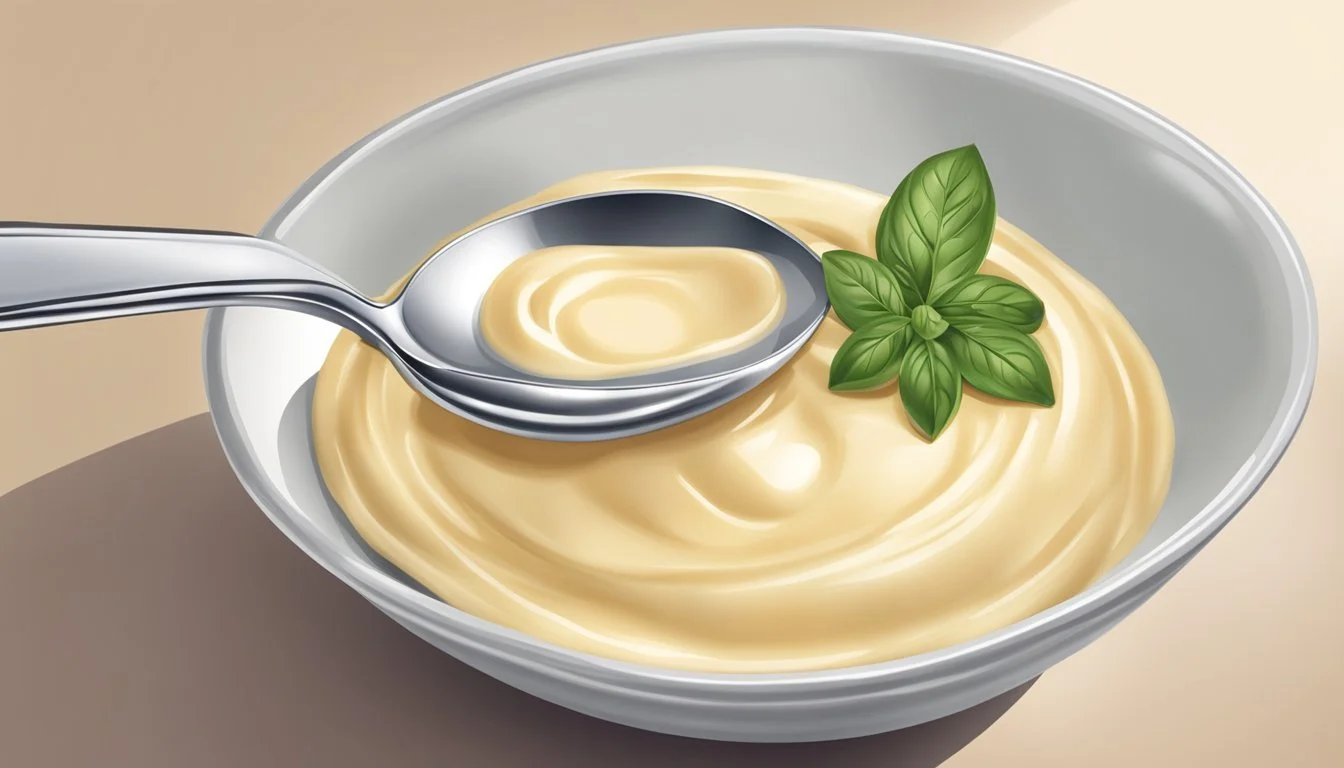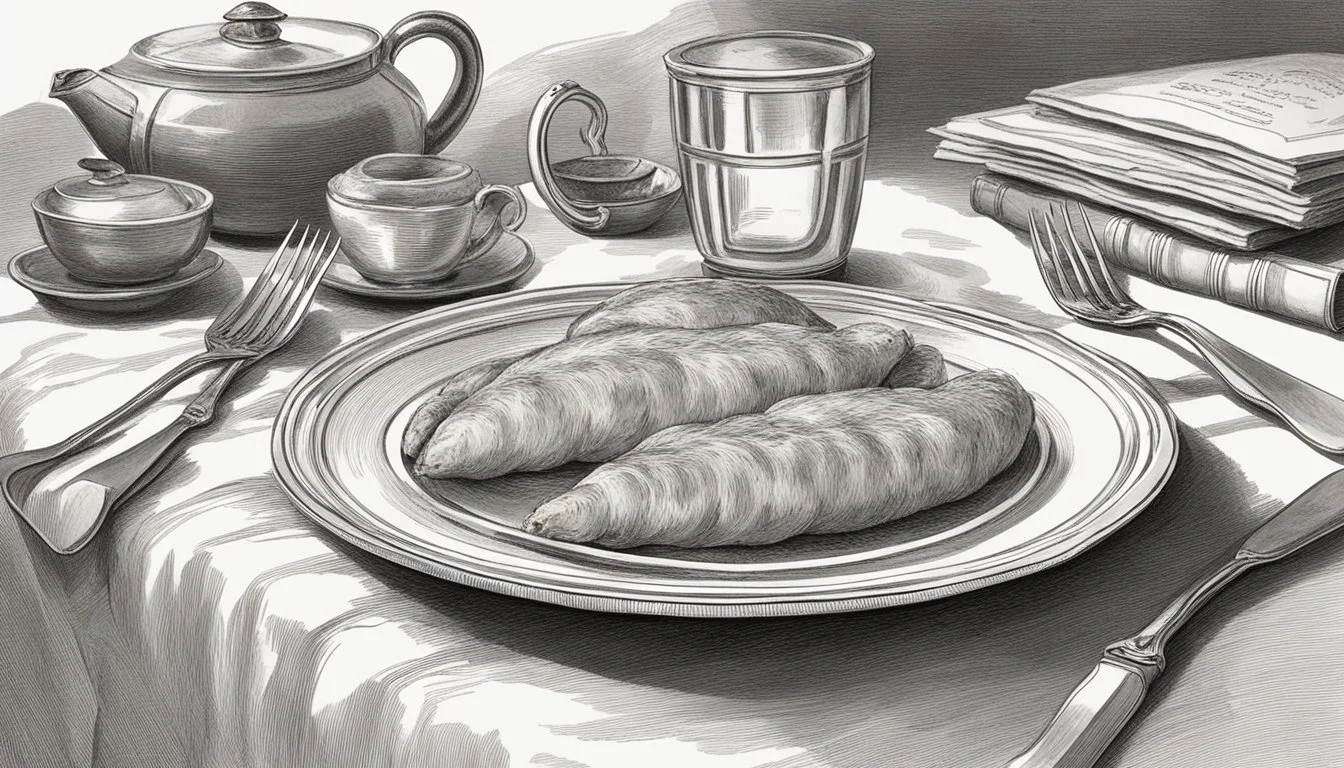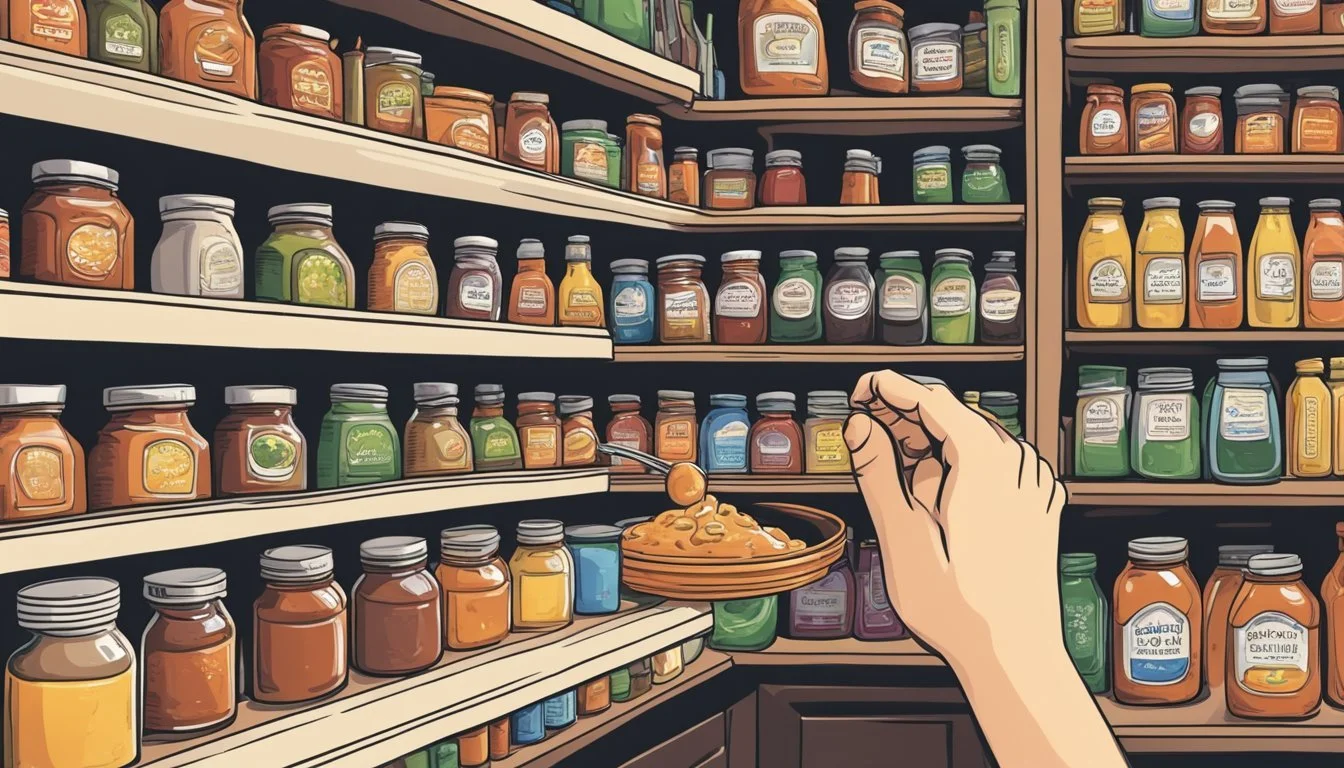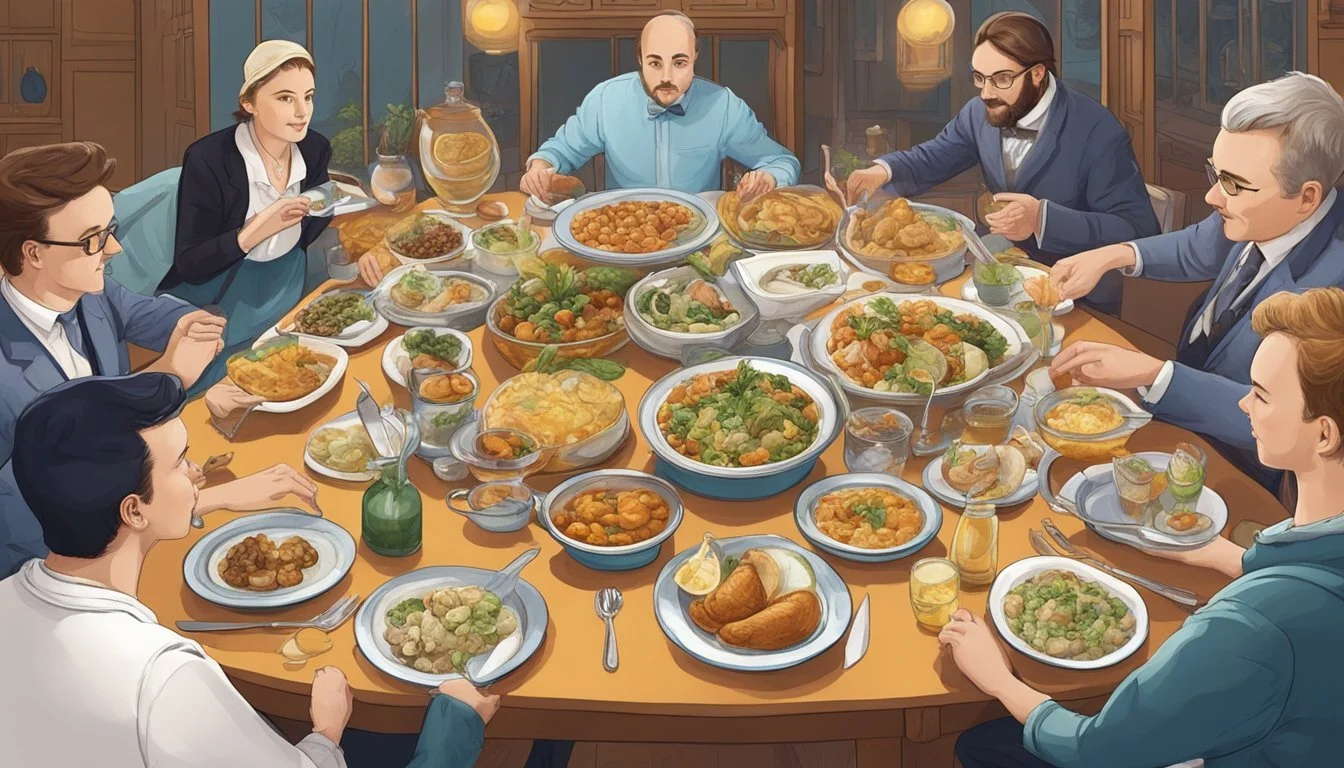How do you eat quenelles?
Mastering the French Dumpling Delicacy
Quenelles are a quintessential element of French cuisine, embodying the finesse and subtlety associated with the nation’s culinary traditions. Originating from the Rhône-Alpes region, which boasts a rich history and culture around food, quenelles are delicate, oval-shaped dumplings. Traditionally, they showcase a fine mousseline often made from pike, a light white fish (What wine goes well with white fish?), but contemporary variations might incorporate other ingredients. In essence, quenelles are about the texture as much as the taste; they are known for their light, airy consistency when prepared correctly.
French chefs employ a combination of seasoned ground meat, fish, or poultry with breadcrumbs, eggs, and a binding agent such as flour or pâte à choux to create the mixture for quenelles. The attention to detail extends to their preparation, where the mixture is usually poached to achieve the desired tenderness, resulting in a product that can be versatile in how it's served. They may be featured as an appetizer, a side, or even as the main component of a dish, basking in a variety of sauces from a simple broth to a rich cream or tomato-based sauce.
Eating quenelles is an experience that straddles the simplicity of comfort food and the complexity of gourmet dining. They are served in various contexts, from homely meals to upscale restaurants, where they can be elegantly plated with a rich sauce adding a luxurious dimension to the dish. The French pride themselves on the presentation and quenelles often assume the spotlight on the plate, their smooth, football-shaped exterior making them as pleasing to the eye as they are to the palate.
The History and Cultural Significance of Quenelles
Quenelles have evolved from being a garnish in elaborate French dishes to taking center stage on the menu. They embody the finesse of French cuisine and carry with them a rich culinary legacy, particularly in the city of Lyon.
Origins in French Cuisine
Quenelles originated in French cuisine as a refined dish combining creamed fish, often pike, with breadcrumbs and egg to bind the mixture. Their characteristic egg-like shape is achieved through poaching, a cooking method that enhances their delicate texture. This dish has its roots deeply embedded in the culinary traditions of the Rhône-Alpes region, claiming Lyon as its capital.
Quenelles in Haute Cuisine
In the realm of haute cuisine, quenelles have been celebrated for their elegant presentation and subtle flavors. Traditionally, they were garnishes that accompanied luxurious dishes, reflecting the culinary artistry of French chefs. Their versatility has allowed them to transition into the main component, often served with sauces like the classic Sauce Nantua, enhancing their flavor profile.
Notable Chefs and Restaurants
Celebrated chef Paul Bocuse, hailed from Lyon, was a prominent figure who showcased the sophistication of quenelles in his Michelin-starred establishments. Quenelles became synonymous with the high standards of Michelin-rated restaurants, where they are presented with impeccable attention to detail, embodying the spirit of French culinary excellence.
Understanding Quenelles
Quenelles are a traditional French cuisine component known for their unique composition and versatile flavors. This section digs into the core elements of quenelles, from their basic ingredients to the diverse range of flavors they can embody.
Quenelle Ingredients
The foundation of quenelles is forcemeat, a combination of ingredient elements such as fish, eggs, flour, and milk. Historically, pike was the preferred fish used, but variations include other types like merlu (hake fish). The typical ingredient list for quenelles includes:
Primary ingredient: fish like pike or hake
Binding agents: eggs and flour
Liquids: milk, to moisten the mixture
Dough and Texture
The dough for quenelles is crafted to achieve a light and smooth consistency. This is accomplished by finely mincing or pureeing the primary ingredient with the binding agents and then combining with milk to create a malleable mixture. It's important that the dough is uniform and free of lumps to ensure the proper texture after cooking.
Typical Quenelle Flavors and Varieties
Quenelles come in a range of flavors, with the primary fish type greatly influencing the final taste. Pike quenelles are a classic choice, offering a subtle flavor, whereas hake-based quenelles may offer a slightly stronger fish taste. Additionally, quenelles can be flavored with various herbs and spices or even paired with elements like heavy cream or jambon cru (dry-cured ham), as seen in some recipes. The various types typically found are:
Fish quenelles: ranging from pike to hake, each lending a distinct flavor
Meat variations: offering richer tastes and differing textures
Vegetarian options: utilizing ingredients like potatoes or cheese for diversity
Preparation Techniques
Quenelles, an elegant addition to French cuisine, require meticulous preparation. The process involves creating a supple dough, shaping it into the distinctive quenelle form, and poaching to perfection.
Mixing and Beating the Dough
One begins by combining the ingredients—typically including semolina or flour, eggs, butter, and milk or water—into a smooth mixture. This dough is then beaten vigorously until it reaches a light, airy consistency. Ensuring all ingredients are uniformly mixed is crucial for the structural integrity of the quenelle.
Shaping the Quenelles
The art of quenelle shaping demands practice and patience. Chefs typically use two spoons with an oval shape to scoop and smooth the mixture into the characteristic three-pointed shape. The use of the spoons—one to scoop and the other to refine the shape—is a skill refined over practice and can also be aided by chilling the dough in the freezer briefly to firm it up before shaping.
Poaching Methods
Once shaped, quenelles are carefully poached in simmering water. The temperature must be monitored to ensure it is hot enough to cook the dough through while gentle enough to maintain the quenelles' delicate shape. Poaching time varies, but one can tell they are done once they rise to the water's surface and remain there.
By mastering these techniques, one can confidently prepare quenelles that are both visually appealing and delicious to the palate.
Cooking Quenelles
Quenelles are a delicate and refined element of French cuisine, requiring precise cooking techniques. There are two primary methods of preparation—baking and poaching—each providing distinct textures and flavors.
Baking Versus Poaching
Quenelles can be baked or poached, depending on the desired outcome. Baking in an oven often involves covering the quenelles with sauce and finishing them under the grill to achieve a golden exterior. For a softer texture, poaching in a simmering liquid, such as water or stock, is preferred. This method allows the quenelles to become tender and light.
Ideal Cooking Times and Temperatures
The total time and temperature will vary based on the cooking method. When baking, a standard guideline is to preheat the oven to 200°C (400°F) and bake for approximately 20 to 25 minutes. For poaching, the quenelles should be immersed in a barely simmering liquid and cooked until they are firm, usually 10 to 15 minutes.
Testing for Doneness
To determine if quenelles are ready, one must look for a uniform, warm temperature throughout and a slightly springy texture. One method is to insert a skewer or toothpick into the center; if it comes out warm and quenelles feel firm to the touch, they are done. While poached quenelles will float to the surface when ready, they should still be tested to ensure proper doneness.
Selecting the Right Sauce
The perfect sauce can transform quenelles from a simple meal to a gastronomic delight. It is essential to consider the base components of the quenelles to determine which sauce will complement their flavors.
Classic Sauces for Quenelles
Sauce Nantua, often regarded as a classic accompaniment, is a creamy sauce enriched with crayfish butter. It is traditionally paired with seafood-based quenelles, especially those made from pike. The rich flavor of Sauce Nantua enhances the delicate taste of the quenelles without overpowering it.
A simple bechamel sauce can also be a versatile choice. This white sauce, made from butter, flour, and milk, serves as a foundation to which one can add cheese or herbs to align with the quenelle's profile.
Matching Sauces to Quenelle Flavors
Quenelles made with meat or poultry are best accompanied by a tomato-based sauce or a creamy sauce with a hint of nutmeg. For instance, a tomato sauce with a slight acidity can cut through the richness of the quenelles, while a creamy béchamel-based sauce can add a satisfying depth.
Fish quenelles typically pair well with a light, cream-based sauce that can accompany the airy texture without adding unnecessary weight. It is important to maintain a balance in flavors to allow the subtleties of the fish to shine through.
Serving and Presentation
The proper serving and presentation of quenelles can significantly enhance the dining experience, turning a simple dish into an elegant affair. Mastery of plating techniques, selecting appropriate accompaniments, and tastefully garnishing are essential to showcasing quenelles.
Plating Techniques
When plating quenelles, they are typically presented as the centerpiece of the dish. They can be arranged in the center of the plate or placed in a precise line for visual symmetry. One can also create contrast by placing the quenelle against colorful sauces that complement its delicate flavor.
Accompaniments and Side Dishes
Quenelles are often served with sides that complement their texture and taste. Traditional accompaniments include:
Sauce Nantua: A creamy seafood sauce enriched with crayfish butter.
Rice Pilaf: A lightly seasoned rice dish that provides a textural contrast.
Vegetable Purées: Smooth purées, such as potato or pumpkin, serve as a soft base for the quenelles to rest on.
Garnishing for Visual Appeal
Garnishes are chosen not just for their flavor but also for their visual impact. A light sprinkling of chopped herbs such as parsley or chervil adds a fresh green touch. A dash of nutmeg or a grating of cheese on top can enhance both the appearance and flavor profile, giving the dish a luxurious finish.
Mastering Quenelle Variations
The versatility of quenelles allows for a wide array of flavors ranging from the traditional fish-based to sweet dessert options. Chefs can exhibit culinary artistry by experimenting with both classic and modern interpretations of this delicate dish.
Savory Quenelles
Traditionally, savory quenelles are light, oval-shaped dumplings primarily made from a mixture of creamed fish, such as pike, bound with egg and flour. However, they have evolved to include other proteins like lobster, crab (What wine goes well with crab?), chicken, or even meat. These variations maintain the airy texture characteristic of quenelles:
Fish Quenelles: Pike is the classic choice, but other fish like salmon create a different twist on tradition.
Meat and Poultry Quenelles: Ground chicken or veal can replace fish for a heartier take.
In terms of preparation, these quenelles are often poached and can be served with rich sauces, such as a velouté or a tomato-based sauce.
Sweet Quenelles
Sweet quenelles deviate from the customary savory flavors, introducing a novel way to enjoy this culinary technique. Typically, these sweet versions are crafted from:
Whipped mousse or cream
Ice Cream or sorbet to add a cold, creamy texture
These sweet quenelles act as an elegant touch atop desserts, providing both a visual appeal and a complement to different dessert components.
Fusion and Contemporary Twists
The modern culinary scene embraces fusion and contemporary twists on quenelles, combining various ingredients and flavors to create unique and surprising dishes. Chefs may experiment with:
Ethnic spices to infuse a regional flair into traditional quenelles.
Pairing with unexpected elements, such as truffles (What wine goes well with truffles?) or exotic fruits.
These innovative approaches give the classic quenelle a new life, catering to the evolving palate of the adventurous diner.
Advanced Quenelle Techniques
Advancing quenelle methods entails innovative shape creation and attentive presentation, particularly for dietary restrictions and complex dishes.
Crafting Quenelles for Special Diets
To accommodate special diets, chefs may adjust quenelle recipes, ensuring flavorful experiences without compromising dietary needs. Using alternative binders, such as agar-agar or gelatin substitutes, allows for the preparation of quenelles that hold together well after freezing, while still catering to vegan or vegetarian guests. These techniques require precision, as the textures and freezing points can vary with each substitute.
Creative Molding and Shaping
Beyond the traditional two-spoon technique, pastry chefs are exploring new forms of quenelles by utilizing molds. Silicone molds, in particular, provide a variety of shapes and sizes, allowing a chef to freeze the quenelle mixture and later release it with ease, preserving its pristine definition. Skill in creative molding is evident when chefs manipulate the recipe to suit the mold, balancing the texture and structural features necessary for a successful quenelle.
Presenting Multi-Component Dishes
When presenting dishes with multiple components, each element is layered to create a cohesive, visually appealing experience. Quenelles often feature as the focal point, with their smooth, sculptured form. Components like sauces, garnishes, or additional quenelles in contrasting colors and flavors are meticulously arranged, emphasizing the quenelle's elegant shape and adding depth to the dish's overall presentation.







